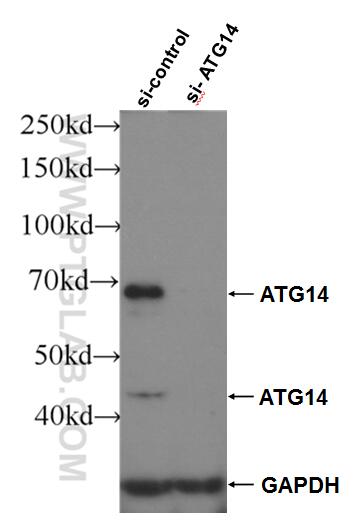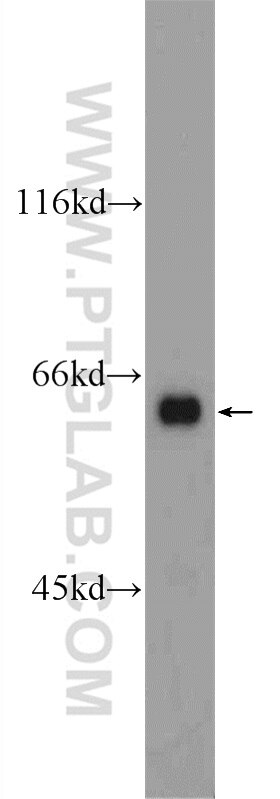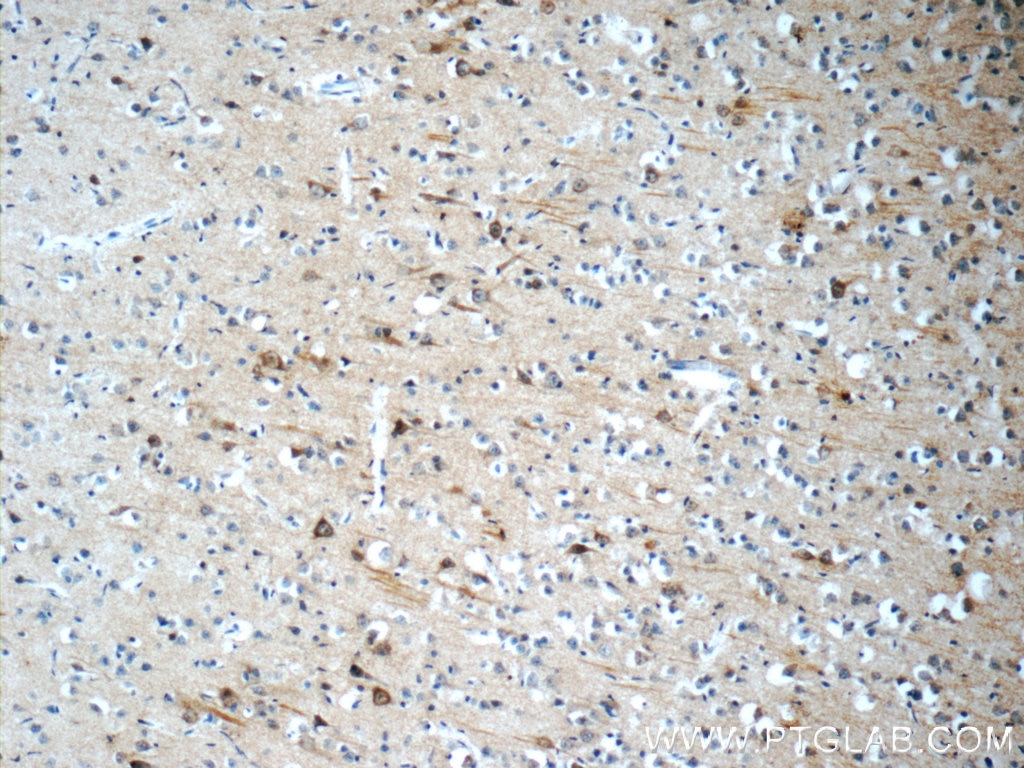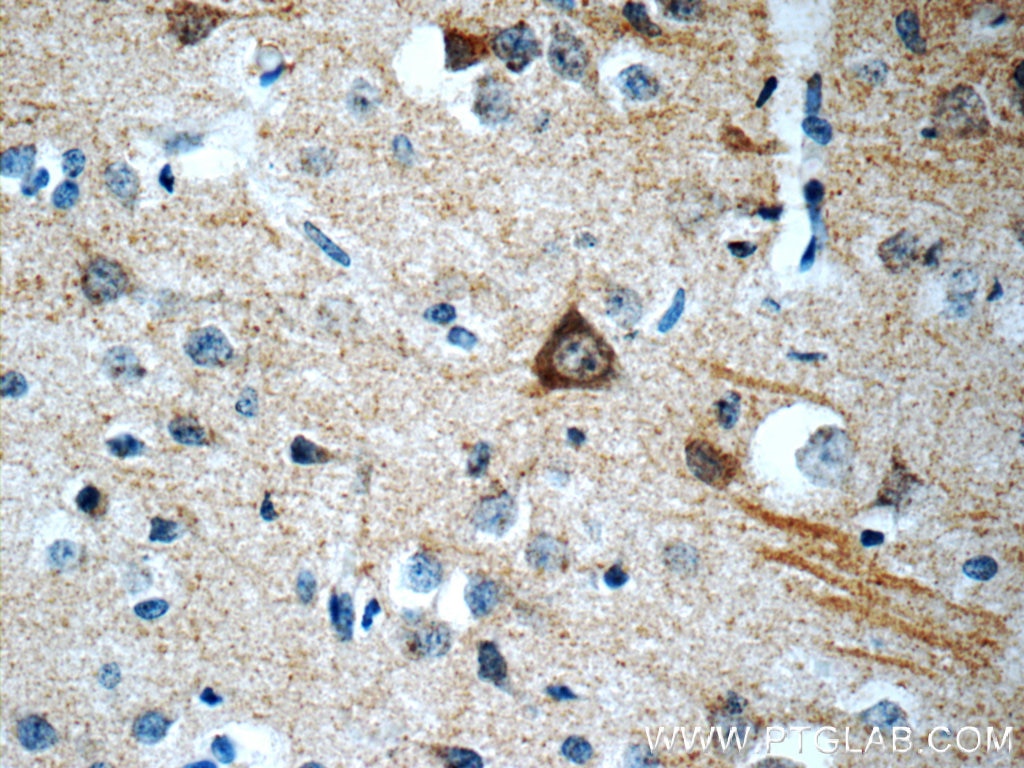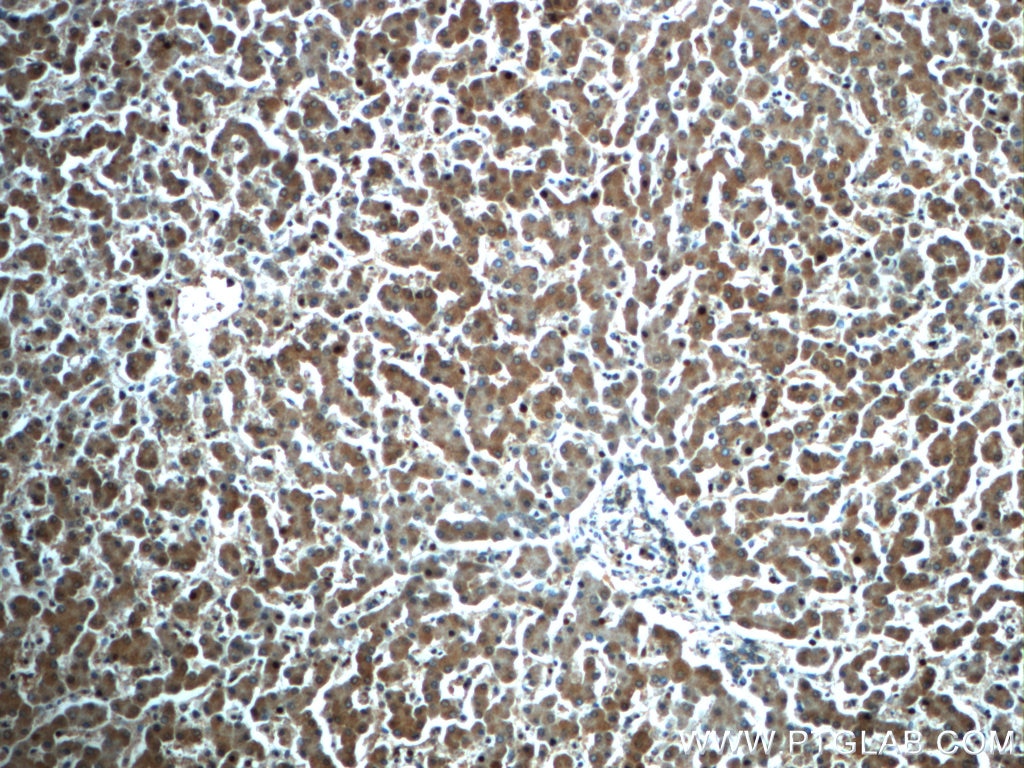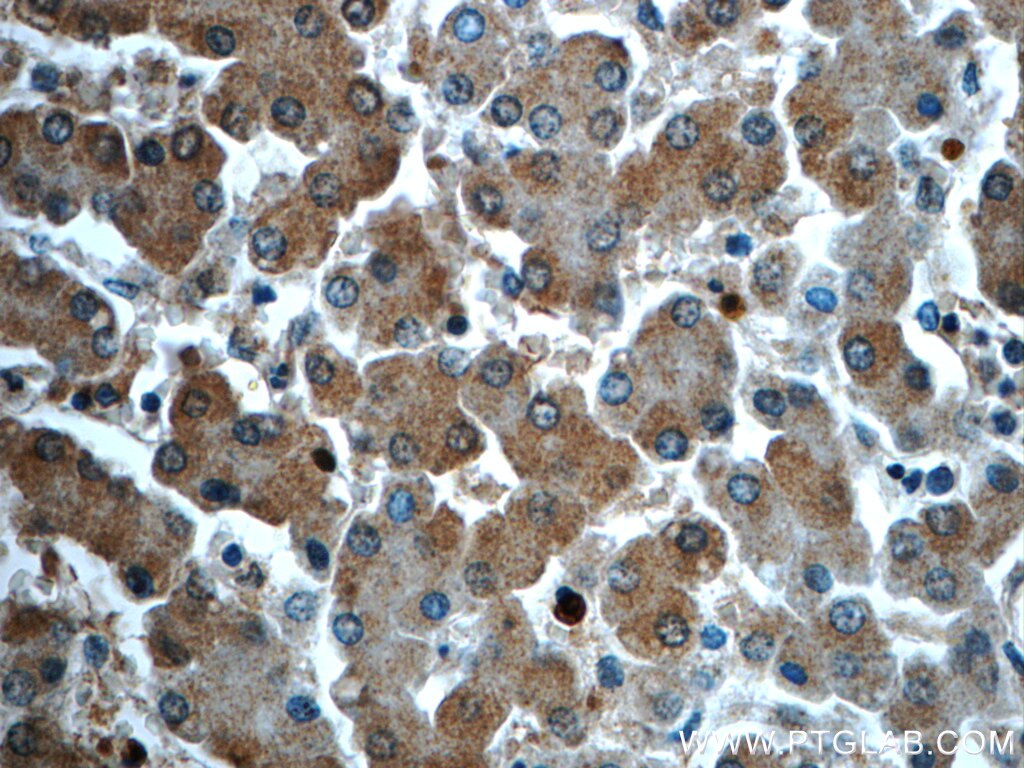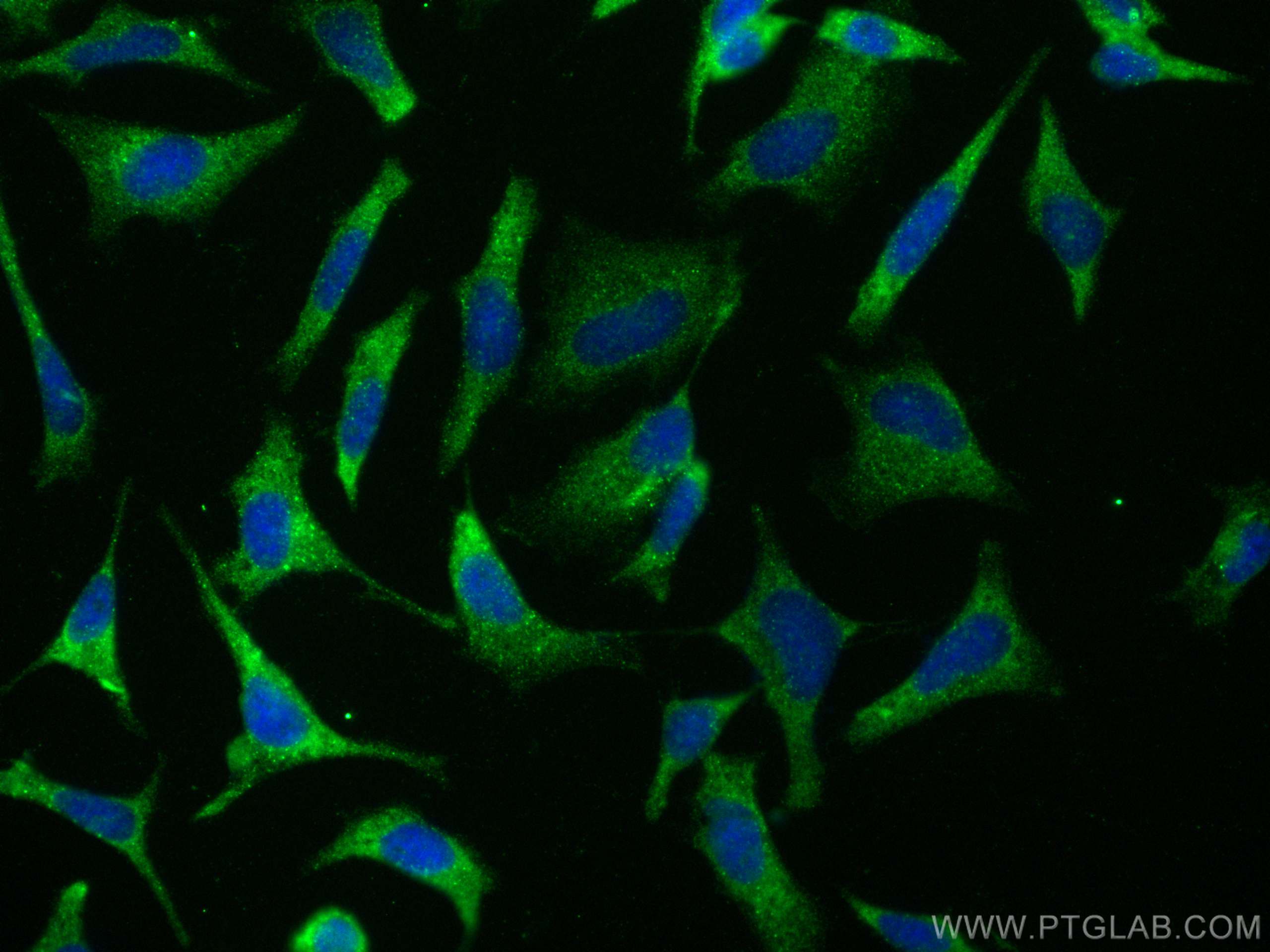Validation Data Gallery
Tested Applications
| Positive WB detected in | mouse brain tissue, HeLa cells |
| Positive IHC detected in | human brain tissue, human liver tissue Note: suggested antigen retrieval with TE buffer pH 9.0; (*) Alternatively, antigen retrieval may be performed with citrate buffer pH 6.0 |
| Positive IF/ICC detected in | HeLa cells |
Recommended dilution
| Application | Dilution |
|---|---|
| Western Blot (WB) | WB : 1:500-1:1000 |
| Immunohistochemistry (IHC) | IHC : 1:20-1:200 |
| Immunofluorescence (IF)/ICC | IF/ICC : 1:50-1:500 |
| It is recommended that this reagent should be titrated in each testing system to obtain optimal results. | |
| Sample-dependent, Check data in validation data gallery. | |
Published Applications
| WB | See 4 publications below |
| IF | See 2 publications below |
Product Information
24412-1-AP targets ATG14/Barkor (C-terminal) in WB, IHC, IF/ICC, ELISA applications and shows reactivity with human, mouse samples.
| Tested Reactivity | human, mouse |
| Cited Reactivity | human, mouse |
| Host / Isotype | Rabbit / IgG |
| Class | Polyclonal |
| Type | Antibody |
| Immunogen |
CatNo: Ag19707 Product name: Recombinant human Barkor protein Source: e coli.-derived, PET28a Tag: 6*His Domain: 152-406 aa of BC109090 Sequence: YSRAQRHQEKKEKIQRHNRKLGDLVEKKTIDLRSHYERLANLRRSHILELTSVIFPIEEVKTGVRDPADVSSESDSAMTSSTVSKLAEARRTTYLSGRWVCDDHNGDTSISITGPWISLPNNGDYSAYYSWVEEKKTTQGPDMEQSNPAYTISAALCYATQLVNILSHILDVNLPKKLCNSEFCGENLSKQKFTRAVKKLNANILYLCFSQHVNLDQLQPLHTLRNLMYLVSPSSEHLGRSGPFEVRADLEESME 相同性解析による交差性が予測される生物種 |
| Full Name | KIAA0831 |
| Calculated molecular weight | 492 aa, 55 kDa |
| Observed molecular weight | 65-68 kDa, 42 kDa |
| GenBank accession number | BC109090 |
| Gene Symbol | ATG14 |
| Gene ID (NCBI) | 22863 |
| RRID | AB_2879531 |
| Conjugate | Unconjugated |
| Form | |
| Form | Liquid |
| Purification Method | Antigen affinity purification |
| UNIPROT ID | Q6ZNE5 |
| Storage Buffer | PBS with 0.02% sodium azide and 50% glycerol{{ptg:BufferTemp}}7.3 |
| Storage Conditions | Store at -20°C. Stable for one year after shipment. Aliquoting is unnecessary for -20oC storage. |
Background Information
Barkor, also named as ATG14, Atg14L and KIAA0831, is named as Beclin 1-associated autophagy-related key regulator protein. The function of Barkor in autophagy has been manifested in several assays, including stress-induced LC3 lipidation, autophagosome formation, and Salmonella typhimurium amplification. A major band around 65-68 kDa and a light band around 42 kDa can be observed in western blot which may be caused by alternative splicing of ATG14. The specificity of ATG14 antibody has been tested by siRNA test.
Protocols
| Product Specific Protocols | |
|---|---|
| IF protocol for ATG14/Barkor (C-terminal) antibody 24412-1-AP | Download protocol |
| IHC protocol for ATG14/Barkor (C-terminal) antibody 24412-1-AP | Download protocol |
| WB protocol for ATG14/Barkor (C-terminal) antibody 24412-1-AP | Download protocol |
| Standard Protocols | |
|---|---|
| Click here to view our Standard Protocols |
Publications
| Species | Application | Title |
|---|---|---|
Cell Death Differ ATG4D is the main ATG8 delipidating enzyme in mammalian cells and protects against cerebellar neurodegeneration. | ||
J Cell Sci Syntaxin 17, an ancient SNARE paralog, plays different and conserved roles in different organisms. | ||
Microb Pathog Roles of bovine viral diarrhea virus envelope glycoproteins in inducing autophagy in MDBK cells. | ||
Exp Eye Res Inhibiting miR-129-5p alleviates inflammation and modulates autophagy by targeting ATG14 in fungal keratitis. | ||
EMBO Rep An ULK1/2-PXN mechanotransduction pathway suppresses breast cancer cell migration |

